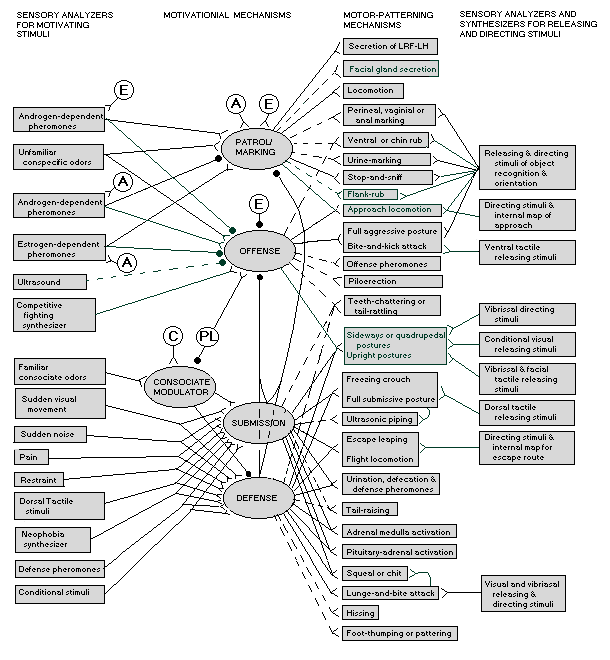
Sites of action of the following hormones are shown: androgens (A), estrogens (E), corticosteroids (C), and hormones of pregnancy and lactation (PL). Four motivational systems are shown: patrol/marking, offense, submission, and defense. Four components are shown for each motivational system: the motivational mechanism, motor-patterning mechanisms, and two types of sensory analyzers and synthesizers--one for motivating stimuli and one for releasing and directing stimuli. Rationale for this organization may be found in the text. Facilitative effects are illustrated as small forks at the tips of projections from one structure to another. Inhibitory effects are illustrated as filled circles at the tips of projections. Projections that are present in all or most species of muroid rodents are illustrated as solid lines, while those present in only some species are shown as dotted lines. (Modified from Adams, 1980).

